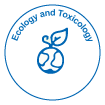हमारा समूह 1000 से अधिक वैज्ञानिक सोसायटी के सहयोग से हर साल संयुक्त राज्य अमेरिका, यूरोप और एशिया में 3000+ वैश्विक सम्मेलन श्रृंखला कार्यक्रम आयोजित करता है और 700+ ओपन एक्सेस जर्नल प्रकाशित करता है जिसमें 50000 से अधिक प्रतिष्ठित व्यक्तित्व, प्रतिष्ठित वैज्ञानिक संपादकीय बोर्ड के सदस्यों के रूप में शामिल होते हैं।
ओपन एक्सेस जर्नल्स को अधिक पाठक और उद्धरण मिल रहे हैं
700 जर्नल और 15,000,000 पाठक प्रत्येक जर्नल को 25,000+ पाठक मिल रहे हैं
में अनुक्रमित
- गूगल ज्ञानी
उपयोगी कड़ियां
एक्सेस जर्नल खोलें
इस पृष्ठ को साझा करें
अमूर्त
Genetic and environmental impacts on autism spectrum disorder
Prachi Srivastava
Autism spectrum disorders (ASD) are highly heterogeneous developmental conditions characterized by deficits in social interaction, verbal and nonverbal communication, and repetitive patterns of behavior and movements. This article reviews the impact of genetic and environmental risk factors on ASD and their adverse physiological mechanisms. Although the involvement of genetic abnormalities in autism spectrum disorders is well-accepted, recent studies point to an equal contribution by environmental factors. So, here we focus on several environmental factors associated with the development of ASD like pesticides, phthalates, polychlorinated biphenyls, solvents, air pollutants, fragrances, glyphosate, heavy metals especially aluminum used in vaccines as adjuvant, volatile organic compounds and organic endocrine-disrupting compounds such as flame retardants, non-stick chemicals, phthalates, and bisphenol A. Toxicants implicated in ASD included pesticides, phthalates, polychlorinated biphenyls (PCBs) , though strongest evidence found for air pollutants and pesticides. Some gene variants in ASD confer altered vulnerability to environmental stressors and exposures. There are now compelling evidences that
gene by environment interactions are important in the etiology of autism spectrum disorders. Here, we also describe the epidemiological evidences implicating altered DNA methylation as a potential mechanism by which environmental chemicals confer risk for ASD, using polychlorinated biphenyls (PCBs), lead, and bisphenol A (BPA) as examples. Understanding how environmental chemical exposures influence DNA methylation and how these epigenetic changes modulate the risk and/or severity of ASD provides insight regarding gene-environment interactions in relevance to ASD. With the help of this study, it is now understood that genetic and environmental factors play a major role in causing autism spectrum disorders than previously thought and because they address modifiable risk factors that may open up avenues for the primary prevention of the disabilities associated with ASD.
विषयानुसार पत्रिकाएँ
- अंक शास्त्र
- अभियांत्रिकी
- आनुवंशिकी एवं आण्विक जीवविज्ञान
- इम्यूनोलॉजी और माइक्रोबायोलॉजी
- औषधि विज्ञान
- कंप्यूटर विज्ञान
- कृषि और जलकृषि
- केमिकल इंजीनियरिंग
- चिकित्सीय विज्ञान
- जीव रसायन
- नर्सिंग एवं स्वास्थ्य देखभाल
- नैदानिक विज्ञान
- नैनो
- पदार्थ विज्ञान
- पर्यावरण विज्ञान
- पशु चिकित्सा विज्ञान
- पादप विज्ञान
- बायोमेडिकल साइंसेज
- भूविज्ञान और पृथ्वी विज्ञान
- भोजन एवं पोषण
- भौतिक विज्ञान
- रसायन विज्ञान
- व्यवसाय प्रबंधन
- सामाजिक एवं राजनीतिक विज्ञान
- सामान्य विज्ञान
- सूचना विज्ञान
क्लिनिकल एवं मेडिकल जर्नल
- आणविक जीव विज्ञान
- आनुवंशिकी
- इम्मुनोलोगि
- एनेस्थिसियोलॉजी
- कार्डियलजी
- कीटाणु-विज्ञान
- कैंसर विज्ञान
- गैस्ट्रोएंटरोलॉजी
- ज़हरज्ञान
- तंत्रिका-विज्ञान
- त्वचा विज्ञान
- दंत चिकित्सा
- दवा
- नर्सिंग
- नेत्र विज्ञान
- नेफ्रोलॉजी
- नैदानिक अनुसंधान
- पल्मोनोलॉजी
- प्रजनन चिकित्सा
- बच्चों की दवा करने की विद्या
- भौतिक चिकित्सा एवं पुनर्वास
- मधुमेह और एंडोक्राइनोलॉजी
- मनश्चिकित्सा
- रुधिर
- रेडियोलोजी
- शल्य चिकित्सा
- संक्रामक रोग
- स्वास्थ्य देखभाल
- हड्डी रोग

 English
English  Spanish
Spanish  Chinese
Chinese  Russian
Russian  German
German  French
French  Japanese
Japanese  Portuguese
Portuguese  Telugu
Telugu